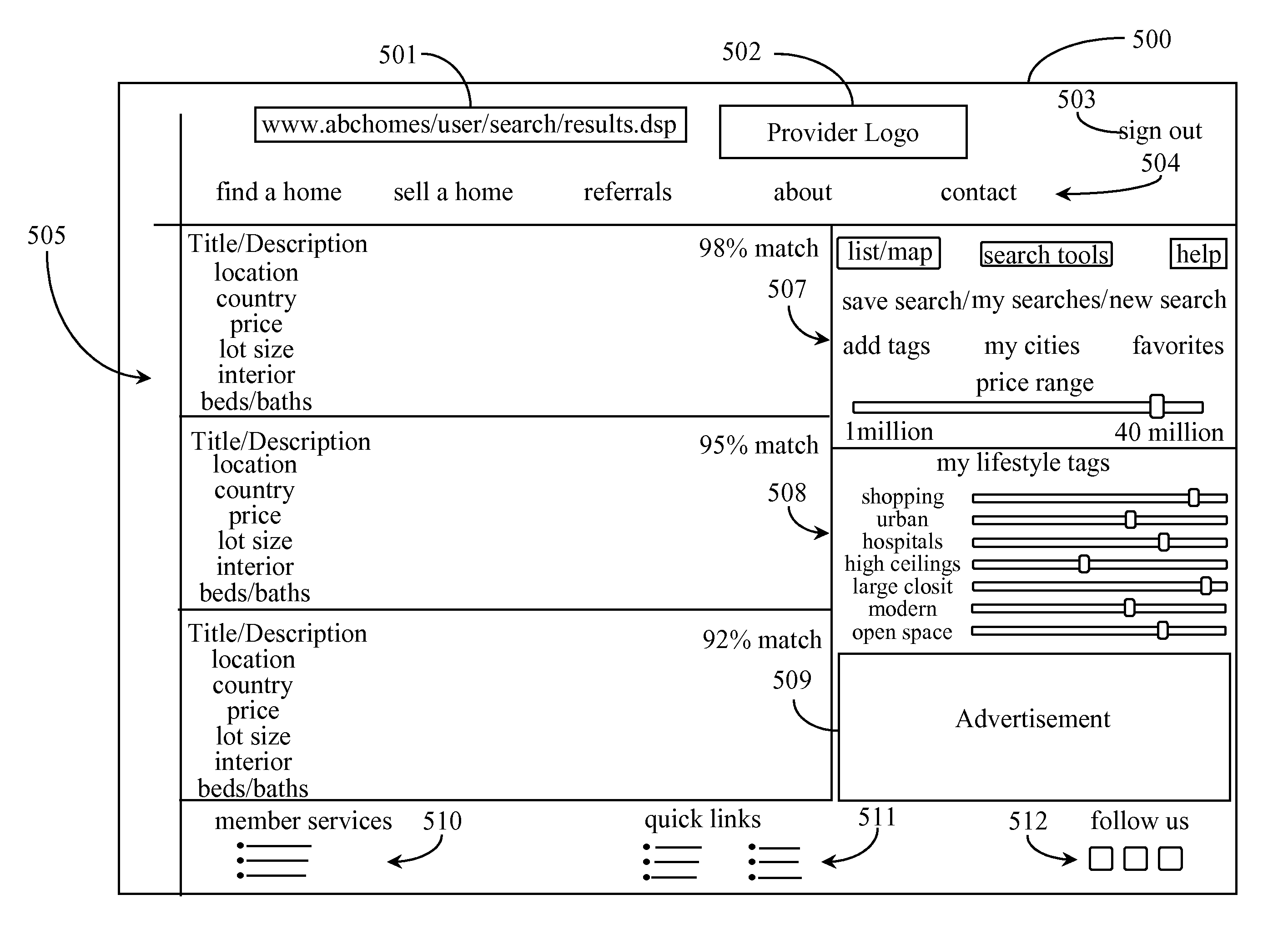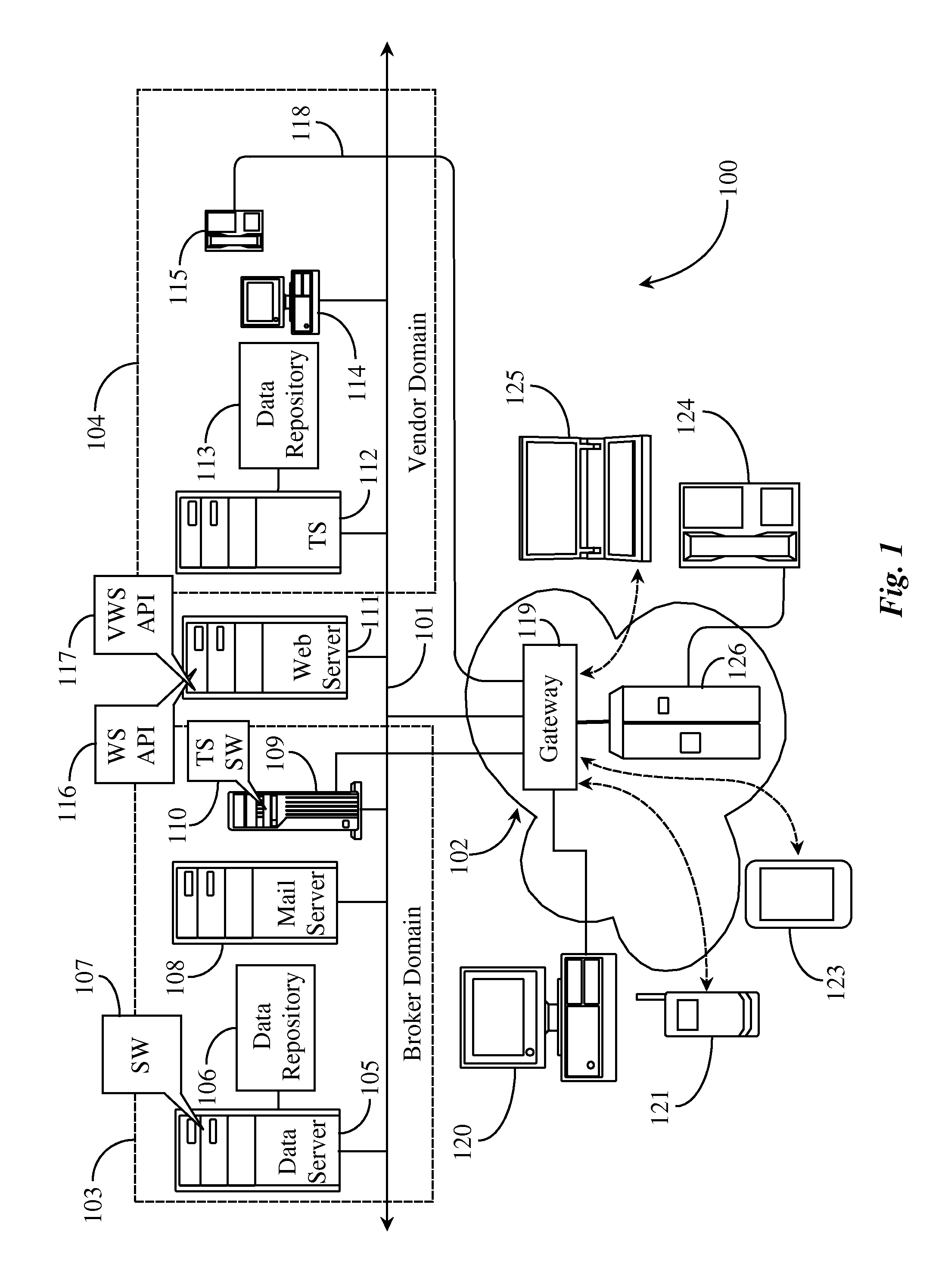Communications Brokering System
- Summary
- Abstract
- Description
- Claims
- Application Information
AI Technical Summary
Benefits of technology
Problems solved by technology
Method used
Image
Examples
Embodiment Construction
[0026]The inventors provide a communications brokering system that customizes search results for users, brokers the transaction process for users, and tracks referral, commission, or other fees payable to clients referring users to vendor products and services. The present invention will be described in enabling detail using the following examples, which may describe more than one relevant embodiment falling within the scope of the present invention.
[0027]FIG. 1 is an architectural overview of a communications network 100 supporting brokered communications according to an embodiment of the present invention. Communications network 100 includes the well known Internet network represented herein by an Internet backbone 101. Internet backbone 101 represents all of the lines, equipment, and access points that make up the Internet network as a whole including connected sub-networks. Therefore, there are no geographic limitations to the practice of the present invention. Network 101 may b...
PUM
 Login to View More
Login to View More Abstract
Description
Claims
Application Information
 Login to View More
Login to View More - R&D
- Intellectual Property
- Life Sciences
- Materials
- Tech Scout
- Unparalleled Data Quality
- Higher Quality Content
- 60% Fewer Hallucinations
Browse by: Latest US Patents, China's latest patents, Technical Efficacy Thesaurus, Application Domain, Technology Topic, Popular Technical Reports.
© 2025 PatSnap. All rights reserved.Legal|Privacy policy|Modern Slavery Act Transparency Statement|Sitemap|About US| Contact US: help@patsnap.com



